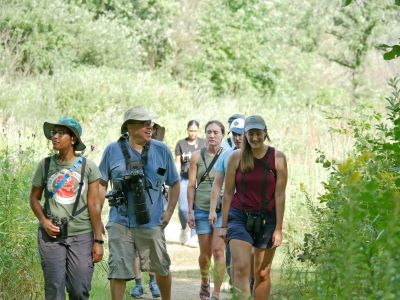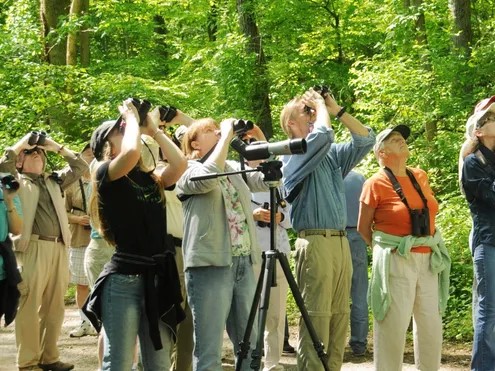Our First Saturday Bird Outings, created as part of our commitment to the Lane Audubon…
 Throughout the summer and fall months, I watch birds use the berry-producing trees and shrubs on our property. The fruit is a magnet for many birds and gives them a wonderful diet supplement during the breeding season and migration. Many bird species have at least a partially frugivorous diet and will eat fruit regularly.
Throughout the summer and fall months, I watch birds use the berry-producing trees and shrubs on our property. The fruit is a magnet for many birds and gives them a wonderful diet supplement during the breeding season and migration. Many bird species have at least a partially frugivorous diet and will eat fruit regularly.
Several years ago, a volunteer Red Elderberry established itself in a small garden area off our porch. This “shrub” is now 20 feet tall and 10 feet wide, and each spring it bursts with creamy white flower bracts that develop into bright red berries in June. Many birds come to eat these berries—finches, grosbeaks, robins, jays, and towhees. This year, for the first time ever, a Swainson’s Thrush visited regularly to glean the elderberries! It is rare to see this species out in the open, so I happily watched from the kitchen window as the trush ate enthusiastically. It was a treat for both of us!
Several small fruit-producing trees and shrubs grow beside a small stream that runs along the edge of our property. The fruits ripen at different times, giving the birds a long fruit-eating season. In June and July, the escaped domestic cherries and chokecherries host flocks of Cedar Waxwings, as well as robins, House Finches, Purple Finches, Black-headed Grosbeaks, and Evening Grosbeaks, all feeding their young with the cherries. Nearby, a Cascara Buckthorn produces black berries that are also popular with the birds, including the Swainson’s Thrushes. I watched each of these bird species dive into the tree branches and later pop up with beaks and faces covered in red berry juices. It was fun to watch them feasting.
I hope to provide more native species of fruit-producing plants for the birds. As fall approaches, seeds can be gathered and cuttings can be taken from existing shrubs and trees. If that approach is too time consuming or uncertain, several native-plant nurseries in our area have great choices in stock. If you too want to pursue this project, remember these tips:
Plant fruit trees and berry-producing bushes and shrubs to provide a natural, renewable source of food that birds can forage. Ideally, choose native varieties that will be more recognizable to local and regional birds.
As always, avoid or minimize pesticide and herbicide use near any fruit-producing plants to protect birds from unintended poisoning or toxic effects. If you must treat the plants, organic products are always an option.
In the fall, leave damaged and overripe fruit on trees and shrubs to provide an excellent natural energy source for migrating birds.
A list of plants that are beneficial to birds is available at www
.laneaudubon.org/conservation/issues/gardening. The Native Plant Society of Oregon website has a lot of information about gardening with native plants and local native-plant nurseries at http://emerald.npsoregon.org. For DIY folks, I recommend Propagation of Pacific Northwest Native Plants by Robin Rose, Caryn E. C. Chachulski and Diane L. Haase, published by OSU Press (http://osupress.oregonstate.edu/book/propagation-of-pacific-northwest-native-plants).



